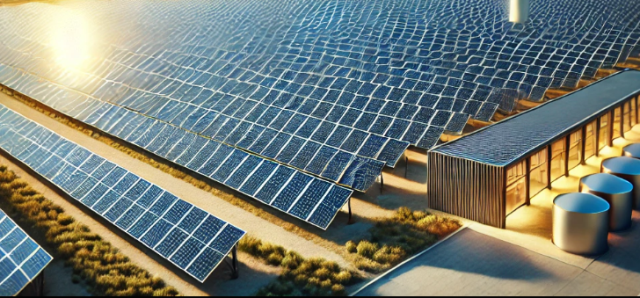In August 2025, governments and private sector players across the world unveiled several major initiatives aimed at accelerating investment in solar energy, reinforcing its central role in the global energy transition.
In India, Larsen & Toubro (L&T) announced the construction of a 116 MWac solar photovoltaic plant in Bihar. This project includes the state’s largest co-located battery energy storage system (BESS), enhancing grid reliability while enabling greater renewable penetration, Economic Times reports.
Maharashtra intensified its solar expansion under the Mukhyamantri Saur Krushi Vahini Yojana 2.0, with a target to deploy 5,000 MW of agricultural feeder solar projects by September 2025, aiming to improve rural power access and reduce dependency on conventional energy, Times of India reports.
In the United States, solar energy investment saw both support and political friction. The Biden administration’s Inflation Reduction Act continued to provide incentives, but opposition from Republican lawmakers delayed key Treasury nominations over disputes tied to the phasing out of clean energy tax credits. Simultaneously, the Trump administration moved to terminate California’s participation in the federally funded “Solar for All” program, jeopardizing $250 million in community solar funds due to bureaucratic conflict, Politico reports.
However, revised tax eligibility criteria also created advantages for U.S.-based firms like First Solar, excluding companies tied to certain foreign nations from the clean energy supply chain benefits, Financial Times reports
Australia made one of the most significant policy commitments by expanding its Capacity Investment Scheme by 25 percent, supporting up to 40 GW of large-scale wind, solar, and storage projects by 2030. This extension is expected to attract nearly A$21 billion in clean energy investment, Financial Times reports.
To sustain this momentum, the government is also considering establishing a dedicated offtake agency and financial derivatives market to provide revenue certainty and mitigate risk for investors, The Australian reports.
In the United Kingdom, the government extended its Contracts for Difference (CfD) subsidy duration for solar and wind projects from 15 to 20 years. This change is intended to reduce financing costs and boost investor confidence ahead of the country’s upcoming CfD auction round, helping to ensure a strong pipeline of renewable energy development, Financial Times reports.
These developments across multiple continents signal a robust and growing commitment to solar energy, despite varying political and regulatory landscapes. The trend is clear: solar power, often combined with storage and supported by targeted financial policies, is becoming a cornerstone of long-term energy strategies. Investors and governments alike are increasingly aligning around solar as a resilient, scalable, and economically viable solution to meet both climate goals and energy security needs.
GreentechLead.com News Desk

